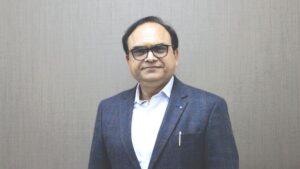Unlike time studies, in which an analyst uses a stopwatch and subjectively rates the operator’s effort to calculate a standard time, a PMTS requires that the analyst break the process into its component actions, assign time values to each action, add allowances and then add the times taken for each to calculate the total standard time. The BS 3138, Glossary of Terms Used in Work Study, defines PMTS as “Tables of time data at defined rates of working for classified human movements and mental activities”. Times for an operation or task are derived using precise conventions or set procedures. Although PMTS in apparel industry is synonymous with MTM, there are other two lesser known systems called MODAPTS and MOST that are also available for the industry to use. Team SW takes a closer look…

The principle of analyzing work into basic actions was first published by F. Gilbreth in 1920, as his Therbligs, it was in 1938 that the concept took practical shape. When the Government of the United States banned Time Study and use of stop-watch as the means of measuring work performed on US Government contracts in early 30s, consultants Quick, Malcolm and Duncan devised the first commercial and internationally recognized system of ‘PMTS’ under the title Work-Factor. Soon other methods followed, the main one, some ten years later, being Methods Time Measurement (MTM) as a form of data table.
The concept of PMTS is to ‘analyze’ a job into its fundamental human activities, apply basic times for these from tables and synthesize them into a basic time for the complete job. The fundamental human activities that together form basic motions are classified as:
- Reach for an object or a location,
- Grasp an object, touching it or closing the fingers around it,
- Move an object a specified distance to a specified place,
- Regrasp an object in order to locate it in a particular way, usually prior to,
- Release an object to relinquish control on it, other elements for assembling to, or inserting an object into, its intended location.
For each of these actions basic times are tabulated. For example, in Work-Factor, as devised by Quick, Malcolm and Duncan the time unit is one thousandth of a minute (the Work-Factor Time Unit) whereas in MTM the Time Measurement Unit (TMU) is one hundred-thousandth of an hour. The times for basic actions are also adjusted for variables such as distances moved, in inches or centimetres and difficulty in performing the actions, such as avoiding obstacles during moves, closeness of fit during assembling, weight of the object, all of which increase the times to carry out the basic actions.
The above defined basic motions cover most of the actions performed by humans when carrying out work. Other basic activities include walking to a specified place, bending down and stooping, kneeling on one knee and kneeling on both knees, foot and leg motions, sitting down and standing. Mental activities include time taken to – See, Inspect, Identify, Nerve conduct, React, Eye focus, Eye travel times, Memorize, Recall, Compute (Calculate) and others, mostly from Work-Factor. Basic times produced by PMTS need to have relaxation allowances and other necessary allowances added to produce standard times.
[bleft]While both Time Study and PMTS need to have relaxation allowances and other necessary allowances added to produce standard times, however unlike Time Study, wherein operator rating factor is also added with allowances to calculate standard minutes, PMTS need not factor for rating, only allowances to be added[/bleft]
MTM Systems
The first Predetermined Motion Time System, known as Methods Time Measurement (MTM), released in 1948 still exists in several variations, commonly known as MTM-1, MTM-2, MTM-UAS, MTM-MEK and MTM-B.
MTM-1, the basic system from which all other MTM systems have been evolved, is used worldwide and is ideally suited to high volume production environments.
Obsolete MTM standards include MTM-3 and MMMM (4M). The MTM-2 standard has also largely been phased out by the creators, but is still used in some commercial applications.
The second level system of MTM-2 was introduced in Sweden in 1966 by combining, statistically averaging, substituting and/or eliminating certain basic motions. One example of this is combining of MTM elements reach, grasp and release to produce a new MTM-2 element of “Get”. Through various similar combinations and rearrangements, the MTM-2 data table was drastically reduced.
MTM-UAS represents a second generation of synthesized data, based on the MTM-1 system. It was constructed through use of statistical analysis of basic MTM-1 motion patterns. This system is best-suited for use in environments which exhibit the characteristics of batch production. MTM-MEK, a third generation system based on statistical analysis of MTM-1 data, is designed for economical measurement of small lot or one-of-a-kind production, with long-cycle times, as well as other infrequently performed tasks previously considered too costly or difficult to measure.
MODAPTS stands for MODular Arrangement of Predetermined Time Standards. In 1966, MODAPTS was introduced and received immediate acceptance and today ranks among the most popular in the world though less used in garment industry. It differs from others as it focuses on the body part doing the moving rather than the distance covered by the body part of the object being handled. This difference contributes to MODAPTS speed of use, when matched with other PMTS systems. MODAPTS is based on empirical studies done in the late 1960s and 1970s with hundreds of people in different work situations, covering many different aspects of work. These studies were guided by Chris Heyde. The goal of these studies was to collect unexceptional performances, i.e. natural speeds, unremarkable for being fast or slow.
MODAPTS uses a coding technique that consists of a ‘letter’ and an integer ‘number’ (all but 1 code), where the integer numbers each represent MODS that can be easily added to determine a coded task’s time. The figures used in MODAPTS codes show the time needed for the part of the body involved to carry out the necessary action at a comfortable pace, which could be maintained as part of a work cycle for a full working day.
MODAPTS can be used to establish a reasonable and sustainable time to complete a job or a proposed job, determine the best method and workplace layout to perform a given task. Balance the flow of work, cost of a job, develop standard operating procedures and work instructions, provide a framework for the analysis of actions and postures in the workplace, match workers’ best actions with appropriate jobs and quantify the degree of disability for particular tasks.
Using MODAPTS®, all body limb motion, eye and mental activity required of a person to complete a task are recorded. These motions may be analyzed for Value Added Analysis and ergonomic review. The unit time is expressed in MODs. One MOD is equivalent to 0.00215 minutes or 0.129 seconds. For example the MODAPTS® movement “M” code elements contain 6 motions as shown below:
M1 = 1 MOD of time for: Finger movement
M2 = 2 MODs of time for: Hand movement
M3 = 3 MODs of time for: Arm movement
M4 = 4 MODs of time for: Whole arm movement
M5 = 5 MODs of time for: Extended arm movement
M7 = 7 MODs of time for: Trunk movement
Various versions of MODAPTS have been translated into Japanese, German, Dutch, Chinese, Korean, Spanish and Russian. MODAPTS is currently used in many countries and by some large corporations such as Ford the United States. MODAPTS was tested by the accounting firm Price Waterhouse in several industrial situations to compare it with existing predetermined time systems, including stopwatch time study and found that accuracy is comparable to other systems such as MTM, an average supervisor can learn MODAPTS and how to calculate standards, and the average employee can understand MODAPTS.
[bleft]Research conducted by the Israel Institute of Technology on the speed of application of different work measurement systems indicate that MODAPTS is approximately twice as fast as MTM-1 and Work Factor on tasks with cycle times of one minute or less and approximately 25% faster than MTM-2 and Time Study[/bleft]
MOST System
MOST (Maynard Operation Sequence Technique) is the synthesized versions of MTM. MOST is the system to measure work. It concentrates on the movements of objects, i.e. pushing a pencil, lifting a heavy box, etc. where the thought process or thinking time is an exception to this concept. It has three levels for manufacturing: Mini MOST – for short cycle, repetitive work, Basic MOST – for medium cycle, repetitive as well as non-repetitive work and Maxi MOST – For long cycle, non repetitive work. Recently it also added Admin MOST – for medium cycle, repetitive/non-repetitive administrative work. Time units used in MOST is same as MTM.
Mini Most
Released in 1980, this system provides the most precise method analysis. An operation in this category may be of a few seconds to 1.6 minutes in length, based on the activities in the range of 50-500 TMU. Regardless of the cycle length, Mini MOST should be used to analyze any operation in which nearly all ‘reach & move’ distances for an operation are less than 10 inches (25 cm). Some of small part sewing using automation may fall into this category.
Basic Most
Released in Sweden in 1972 and in the United States in 1974, this is the most commonly used versions of MOST wherein activities that are likely to be performed more than 150 times but less than 1500 times per week should be analyzed. The cycle times of an operation occurring often takes from a few seconds to 10 minutes in length and have a range of 200-2000 TMU. A majority of operations in most industries including sewing, fall into this category.
Maxi Most
This concept was released in 1980 and is at the highest level. Maxi most is used to analyze activities that are likely to be performed fewer than 150 times per week. An operation in this category may be two minutes to more than several hours in length, based on activities in the range of 2000-20000 TMU. Maxi MOST index ranges accommodate the wide cycle to cycle variations that are typical in work set-up, heavy assembly, maintenance or utility activities; pre- and post-sewing activities are ideal for this system.
Admin Most
Originally developed and released under the name Clerical MOST in the 1970s, it is meant for administrative work in any industry including the highly administrative service industry. This uses the same guidelines used for Basic MOST, i.e. the motions recorded are on the level of tens of TMUs.
Conclusion
Predetermined time standards are the preferred method and they are widely accepted and used today around the globe. Industrial engineers in different industries including garment manufacturing are generally trained in MODAPTS ®, MTM® or MOST®. Predetermined time standards have several advantages over the traditional stopwatch method:
- Absence of stopwatch reduces Hawthorne effect,
- Excessive values alert analyst to potential Ergonomic issues,
- The concept is methods sensitive as ‘How’ task is done is recorded,
- No performance rating eliminates inherent inaccuracies,
- Consistent, regardless of who performs the work or by whom the study is performed,
- Requires fewer observations, thereby reducing the amount of time required to develop standards,
- Can be understood by personnel at all levels of the organization,
- Widely accepted by labour unions as an impartial “umpire”.
There are many proprietary systems deveoped based on MTM and MODAPTS, which are garment industry specific. The users are required to purchase the license of the data code, get trained on how to use the data code and only the licensed practitioners are eligible for using the proprietary systems.
Almost all solution providers of proprietary systems offer software based systems for easy retrieval, calculation, storage and data portability with other systems like PDM, payroll systems.







